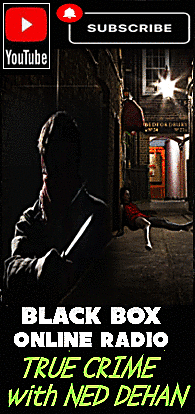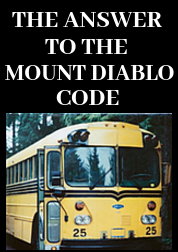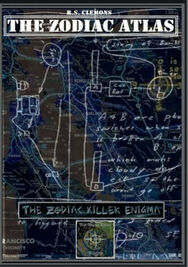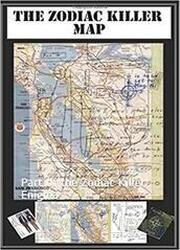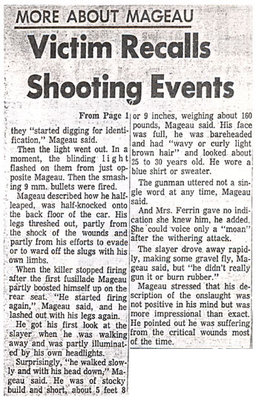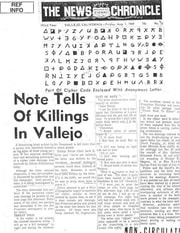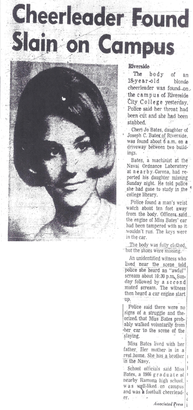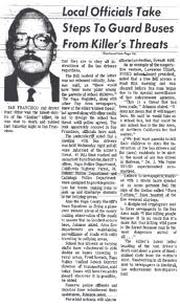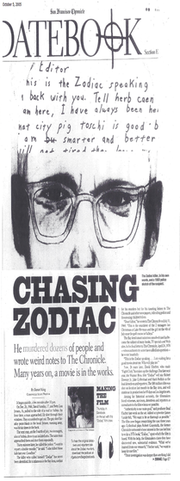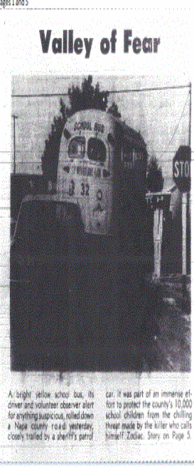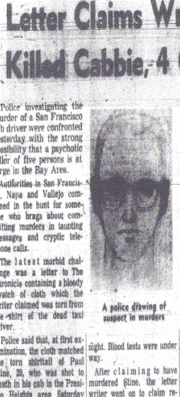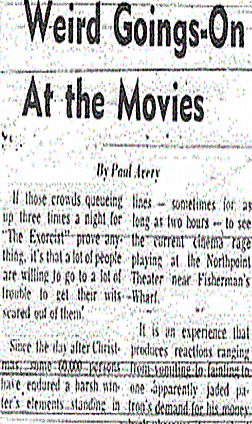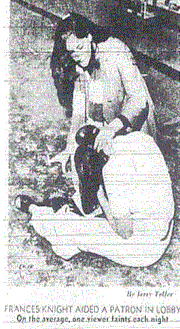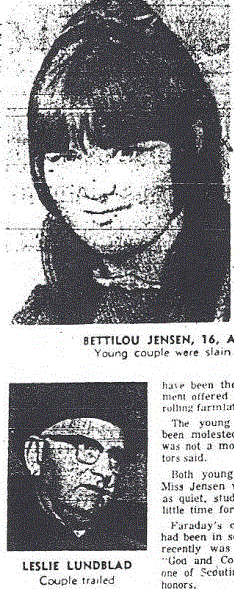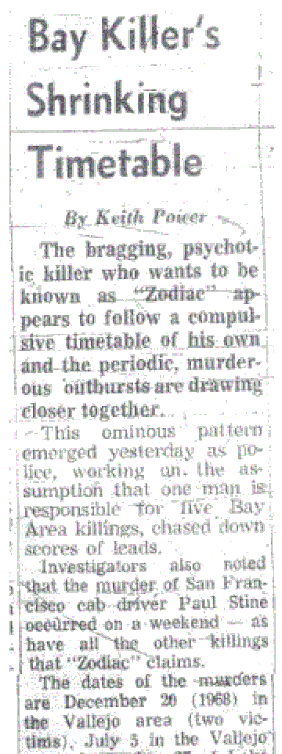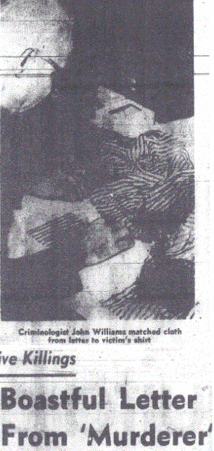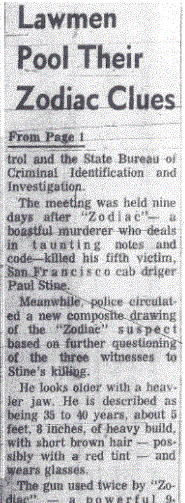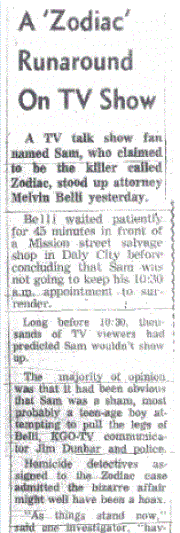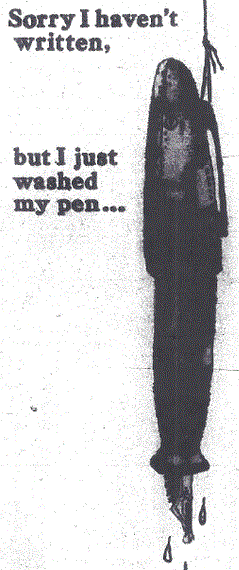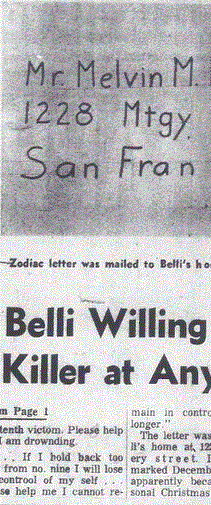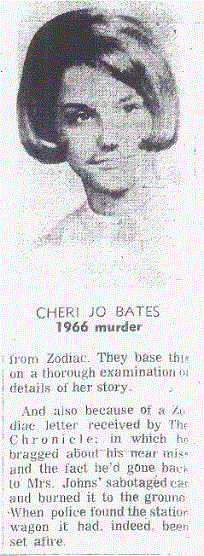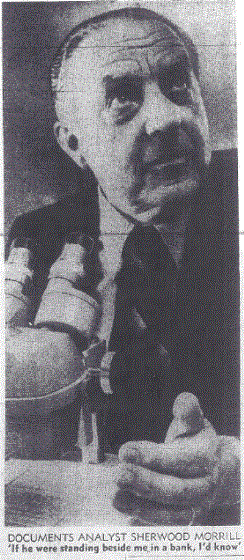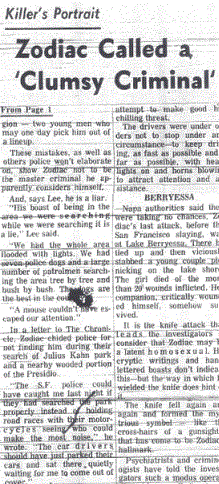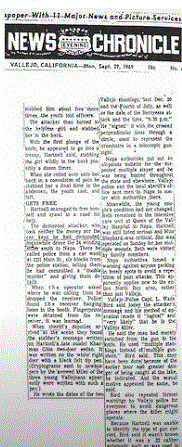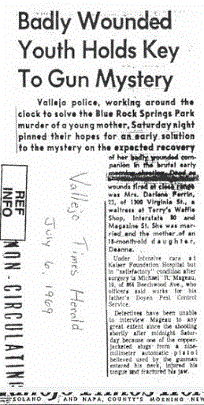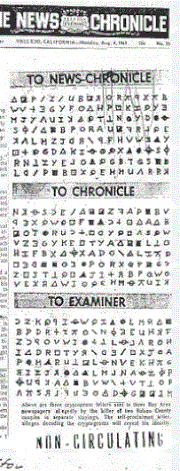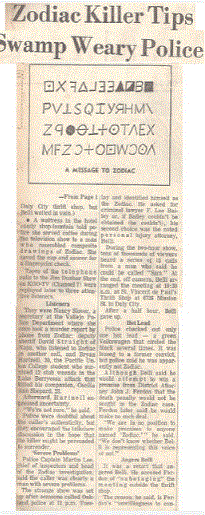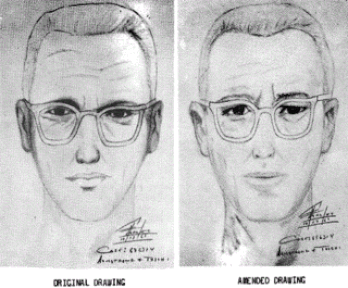
Donald Fouke also stated in the 2007 Zodiac documentary "One month later when the composite drawing came out at Richmond Station and was posted on the wall he looked similar to the man I had seen on October 11th, I then wrote a scratch to my lieutenant to forward to homicide division, so they would have the additional information and appearance of the suspect." This again does not sound like a statement of somebody who had already contributed to the amended sketch weeks earlier. The greatest stumbling block regarding Donald Fouke providing the #2 SUSPECT in the police report is the final line, describing a suspect 'Last seen walking north on Cherry Street, from Washington Street.' Donald Fouke last saw the suspect walking east on Jackson Street, in the vicinity of Maple Street, which he attested to in his memorandum on November 12th 1969. But the police report not only doesn't mention Donald Fouke anywhere, it certainly doesn't say "Suspect 'Last seen walking north on Maple Street, from Jackson.' Therefore the only contributors to the #2 SUSPECT description most likely had to originate from a vantage point allowing them to view the suspect heading up Cherry Street. One could possibly accept the amended sketch originating from the three teenagers, but the #2 SUSPECT was apparently typed up and countersigned by Armond Pelissetti by 6.29 am on October 12th 1969, just 8 1/2 hours after the murder of Paul Stine. This raises the question - how could the three teenagers describe the suspect as '25-30 years of age' and a man in his 'early forties' inside of 9 hours, unless this document was subsequently added to? They would also - although less significant - have to have altered the suspect's hair color from 'reddish-brown' to 'reddish-blond' within the same timeframe.
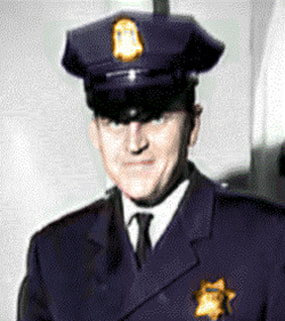 Officer Donald Fouke
Officer Donald Fouke It has also been suggested that Armond Pelissetti 'incorporated' Donald Fouke's description into the #2 SUSPECT, but if this were the case then Donald Fouke should have been mentioned in the police report, and the final sighting of the Zodiac listed as 'walking north on Maple' - plus Armond Pelissetti by all accounts didn't accept Donald Fouke had seen Zodiac. This is what he said in the 2007 Zodiac documentary "I believe that Fouke would have been honest, but that scratch and what he told me do not coincide. It seemed Officer Fouke in that amount of time felt that he had stopped the Zodiac. Well, it's very hard to say whether he did or not, it would be a point of conjecture at this point and he seemed quite upset. Fouke was also very clear as to what the person was wearing, well it just so happens that area is extremely well lit and I cannot imagine his not seeing the shine of blood on the clothing if it had been Zodiac. I feel bad for him if he believes that was Zodiac. I don't think it was." Not the words of an officer who is going to incorporate details of a suspect off his own back, without referencing the source (Donald Fouke) and then countersigning the police report for which he is responsible.
The police report is also separated into six sections #1, #2, #3, #4, #5 and #6.
Section 1 deals with the teenagers description of the events in and around the taxicab. Section 2 is the description of the suspect. Section 3 deals with the property of Paul Stine and the taxicab. But sections #4, #5 and #6 are effectively left blank, with N/A (not applicable) written after them. The teenagers had already given their description of the suspect to the police dispatcher over the telephone and were to prepare a comprehensive description of the suspect with a police sketch artist. The question is, were #4, #5 and #6 deemed not applicable by Pelissetti, as a full and proper description was already being designed in the form of a wanted poster and Pelissetti did not want to contradict it in the police report. The #4, #5, and #6 may very well have represented the three teenagers descriptions of the suspect, but since they were working on it together, it was considered not applicable.
Let us consider the #2 SUSPECT to be from the three teenagers. They give a description of a man in his early forties with reddish-blond hair, countersigned by Pelissetti at 6:29 am on October 12th 1969. By October 13th 1969 the teenagers first sketch is released, but has changed to a man around 25-30 yrs with reddish-brown hair, and then a few days later they supposedly have a change of heart and an amended sketch is released describing a man aged 35-45, short brown hair, with a red tint. Bearing in mind the #2 SUSPECT, is it conceivable #4, #5 and #6, could have been #4 SUSPECT, #5 SUSPECT and #6 SUSPECT, but in view of the composite sketch they were simply marked not applicable. The answer may simply come down to indecisive teenagers who disagreed among themselves, fluctuating back and forth, until a compromise of 35-45 years was attained in the revised sketch.
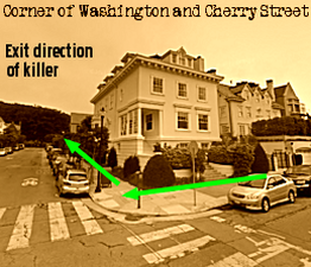
This eyewitness and their family, may have reported the sighting to police near to the scene and requested that their identity be kept discreet, due to the sensitive nature of their statement, hence only the reference to a #2 SUSPECT without the source. Is it also fair to say, that if this 8-year-old was a 'witness in the murder of the cab driver', then a description should have been taken from this child, as it was from the three teenagers, and subsequently taken into account when releasing any descriptions of the killer? The FBI file itself is suggestive that this sighting was regarded as important.
Alex Lewis recently under the Freedom of Information Act managed to acquire an unredacted version of this FBI file, naming the subject observed by the 8-year-old. It stated 'For info ident division, San Francisco PD advised eight year old witness in murder of cab driver identified ....... as possible subject in this matter.' The #2 SUSPECT was described as a man in his early forties. The amended police sketch described a man aged 35-45 years. The subject named in the FBI file was 38 years of age on October 11th 1969. It must be stressed however, that the subject named is 'a possible subject in this matter' and not necessarily connected to the crime. To view the unredacted document please visit;
http://www.zodiacciphers.com/welsh-chappie---zodiac-news/eight-year-old-witness-identified-name-release
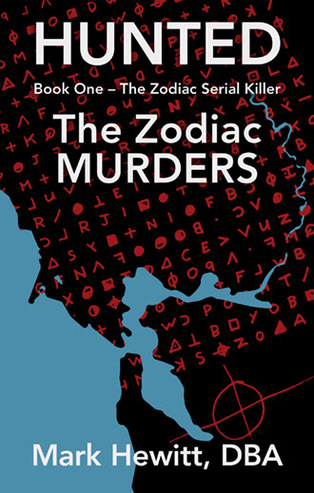
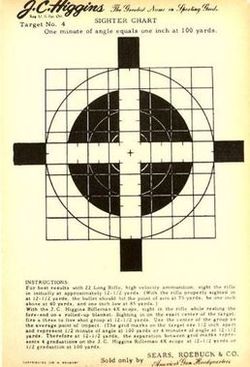
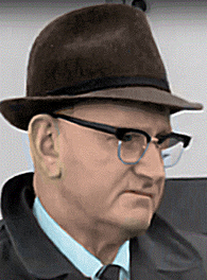
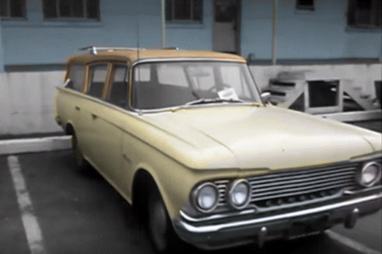
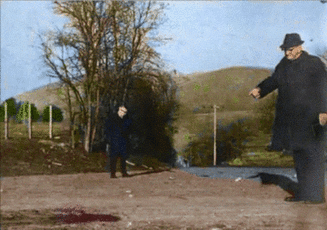
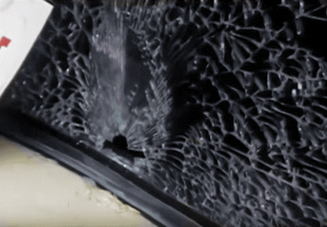
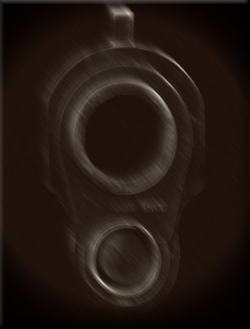
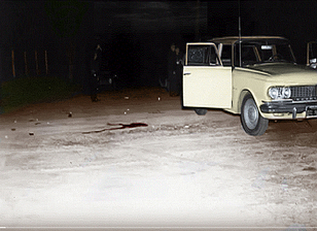
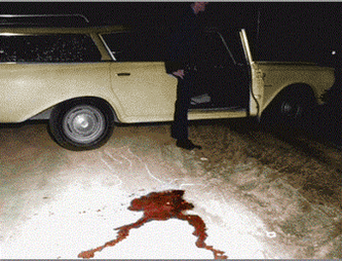
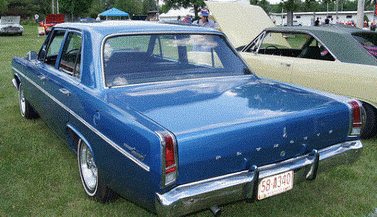
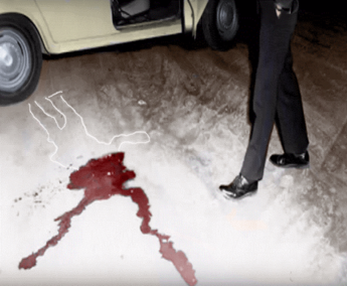




 RSS Feed
RSS Feed
